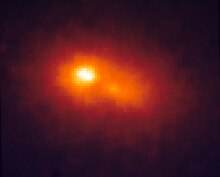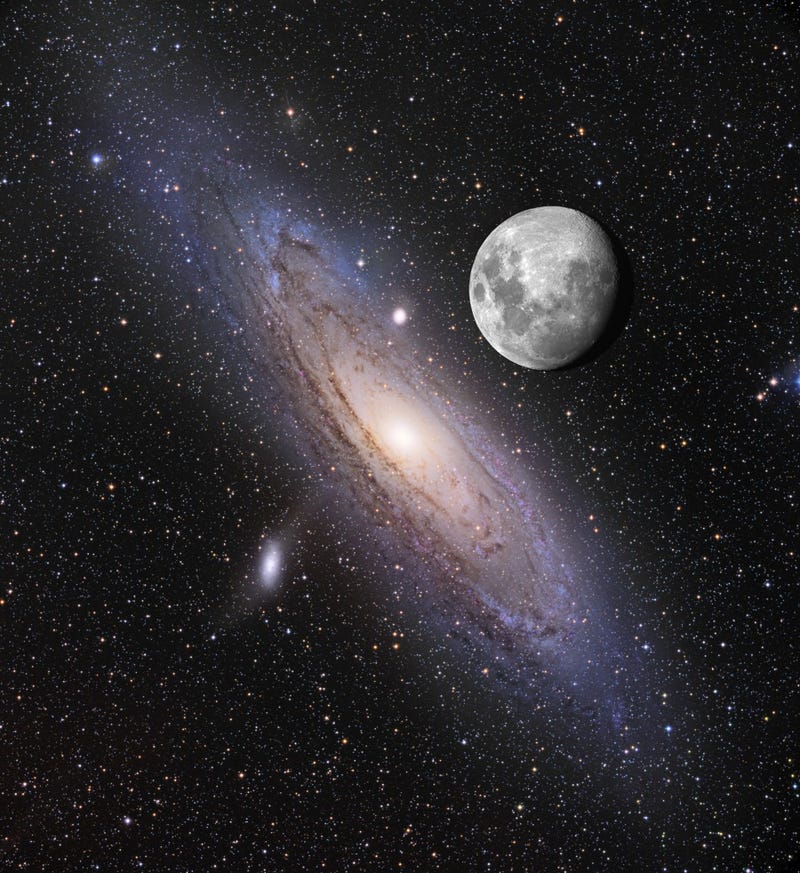neufer wrote:MarkBour wrote:neufer wrote:- You also seem to have little idea of the size/scale of the expanded NuSTAR (inset)
scan image in today's APOD... which I estimate at about 60 ly/pixel.
The surmised Wikipedia elliptical orbits around the black hole are only on the order of ~10 ly in diameter.
Ah. So in the NuSTAR image here, the bright yellow and bright blue locations are about 12,000 to 15,000 ly apart?
2,500 ly apart (horizontally)?
No, I'm just lost. (Not that it matters ... there
is a correct answer, and I'm sure the creators of the image know it with great precision and confidence. You probably know it, too. Whether or not I have a good method for figuring it out is not very important.) But if you're not bored with this, then: I downloaded the image and counted about 213 pixels between the two spots (a 122 x 175 rectangle). That gave me about 213*60 = 12,800 from your figure. I put a question mark after my answer, since I doubted it; my pixels may not have matched your pixels at all. If the outer image is a pretty complete image of Andromeda (is it?) and we believe that's 220,000 ly, then I get a yardstick for comparison (on my image, I got 2561 ly / in). That also ignores any aberration of the image as plotted on a flat page. The larger inset appears to be magnified about 1.7 times the original, so I end up with about 3 in = 7682 / 1.7 = 4545 ly between the 2 points. I don't seem to get 2500 ly. From what I'm doing, you can see all of these are just measures as if things are all equidistant from the viewer ... which is what I think you may have meant by "horizontally" in your post. Although in this case, I assume the objects in the NuSTAR inset image are not at all close to equidistant from us, so these measurements are of course only crude lower bounds on the actual distances in space.
The main thing, though, I think, is that you pointed out to me that these are indeed a lot farther apart than I imagined, and so the yellow source is definitely not something just a few light years from the blue source. As a neophyte to the subject of Andromeda's core, it looks to me like it's a complicated place, with many structures and varied parts interacting.
 High Energy Andromeda
High Energy Andromeda

